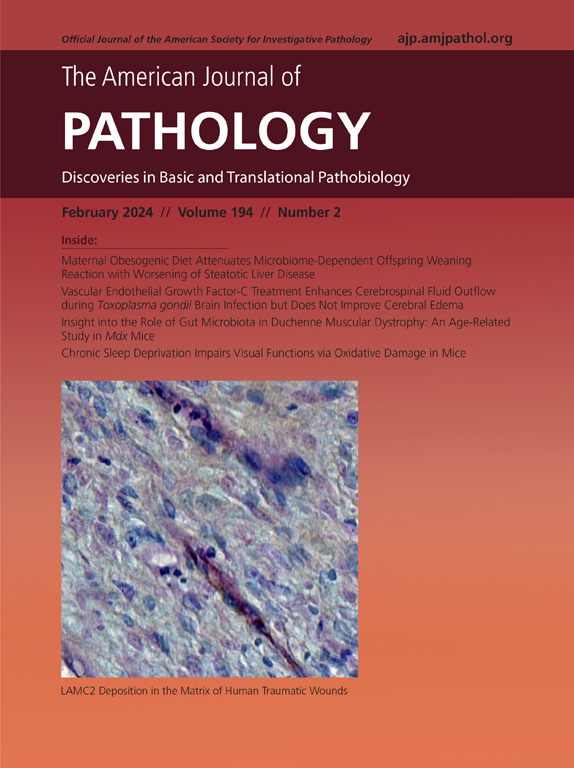超分辨率显微镜显示了人类癌症组织中网格蛋白结构的变化。
IF 3.6
2区 医学
Q1 PATHOLOGY
引用次数: 0
摘要
超分辨率显微镜对蛋白质的详细结构分析具有很大的前景,但其在原位蛋白质结构研究中的应用仍然很少。网格蛋白包被的孔介导的内吞作用(CME)在人类癌症中起着关键作用。我们的目的是发现在癌症中网格蛋白窝是否有结构变化。我们利用免疫荧光(IF)结合超分辨率结构照明显微镜(SR-SIM)对正常和癌前列腺组织进行观察,揭示了网格蛋白结构和生物学的新细节。我们用IF-SR-SIM在人体组织中原位显示了网格蛋白(重链)斑块和凹点,以及AP2(一种网格蛋白衔接蛋白)和EGFR(一种CME受体靶点)在纳米尺度上的表达。与低级别前列腺组织或正常前列腺组织相比,高级别前列腺组织中网状蛋白窝的大小增加。这些结果表明:(1)SR-SIM可用于在临床组织切片中以高分辨率识别蛋白质结构;(2)由于网格蛋白凹坑大小的增加,作为促进癌症侵袭的机制,货物容量增加。这些结果揭示了癌症病理和通过网格蛋白的CME可能在癌变中发挥的作用。本文章由计算机程序翻译,如有差异,请以英文原文为准。
Super-Resolution Microscopy Reveals Alterations in Clathrin Structure in Human Cancer Tissue
Super-resolution microscopy holds great promise for detailed structural analysis of proteins, yet its application in the investigations of protein structures in situ remains sparse. Clathrin-coated pit-mediated endocytosis (CME) plays a key role in human cancer. This study aimed to discover whether there are structural changes in clathrin pits in cancer. Immunofluorescence combined with super-resolution structured illumination microscopy (SR-SIM) on normal and cancerous prostate tissue was used to reveal novel details of clathrin structure and biology. Clathrin (heavy-chain) plaques and pits, expression of adaptor protein 2 (a clathrin adaptor protein), and epidermal growth factor receptor (a receptor target for CME) at nanometer scale in human tissue were observed in situ with immunofluorescence-SR-SIM. The size of the clathrin pits in high-grade cancer was greater compared with that in low-grade or normal prostate tissue. These results demonstrate that SR-SIM can be used to identify protein structures at high resolution in clinical tissue sections and there is an increased cargo capacity due to the increase in the size of clathrin pits as a mechanism that facilitates aggressiveness of cancer. These results shed new light on the pathology of cancer and the role CME via clathrin may play in carcinogenesis.
求助全文
通过发布文献求助,成功后即可免费获取论文全文。
去求助
来源期刊
CiteScore
11.40
自引率
0.00%
发文量
178
审稿时长
30 days
期刊介绍:
The American Journal of Pathology, official journal of the American Society for Investigative Pathology, published by Elsevier, Inc., seeks high-quality original research reports, reviews, and commentaries related to the molecular and cellular basis of disease. The editors will consider basic, translational, and clinical investigations that directly address mechanisms of pathogenesis or provide a foundation for future mechanistic inquiries. Examples of such foundational investigations include data mining, identification of biomarkers, molecular pathology, and discovery research. Foundational studies that incorporate deep learning and artificial intelligence are also welcome. High priority is given to studies of human disease and relevant experimental models using molecular, cellular, and organismal approaches.

 求助内容:
求助内容: 应助结果提醒方式:
应助结果提醒方式:


